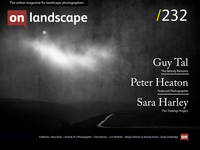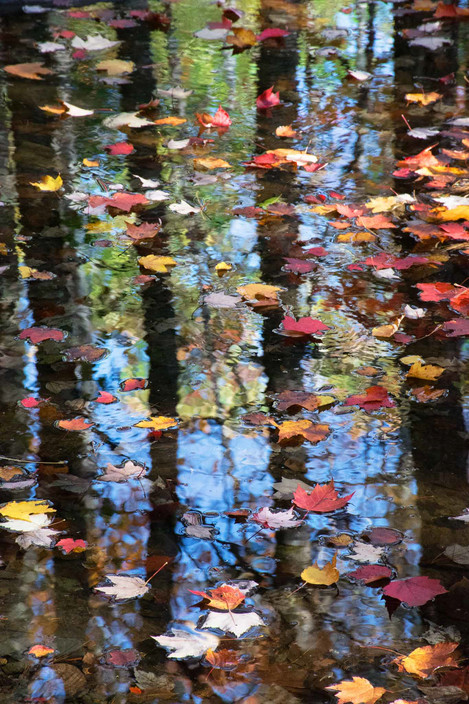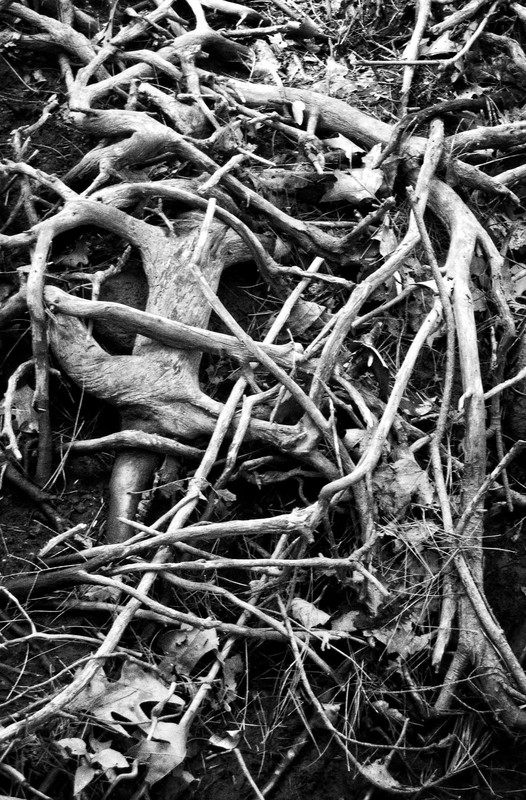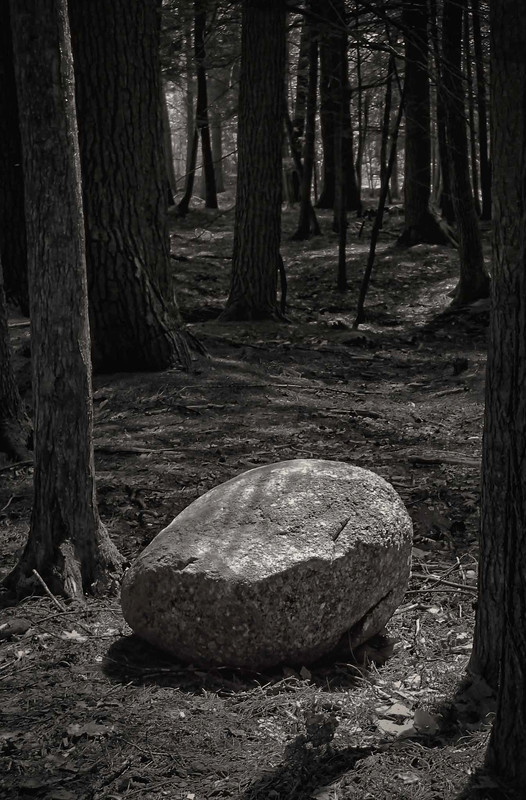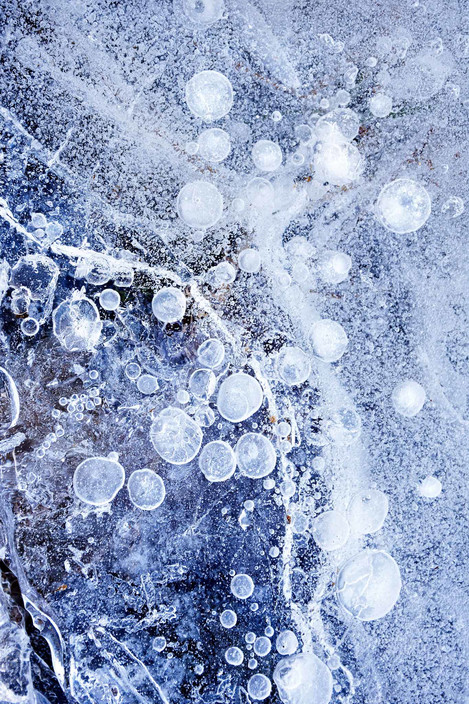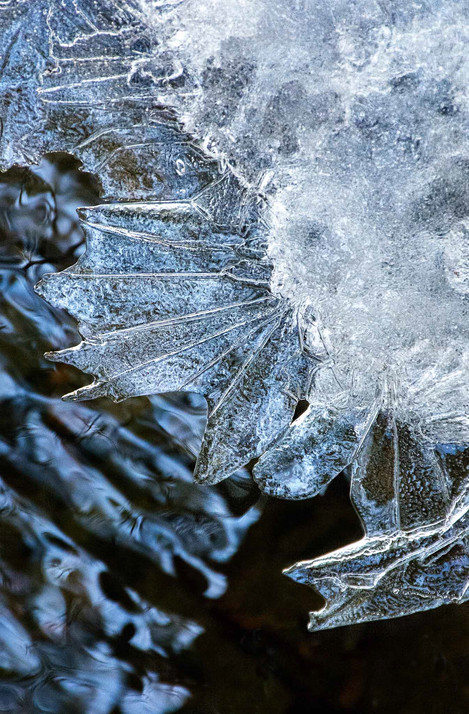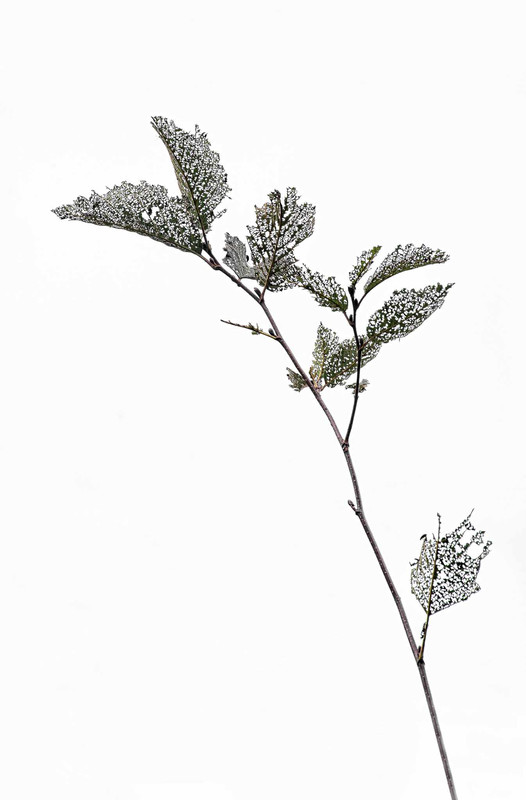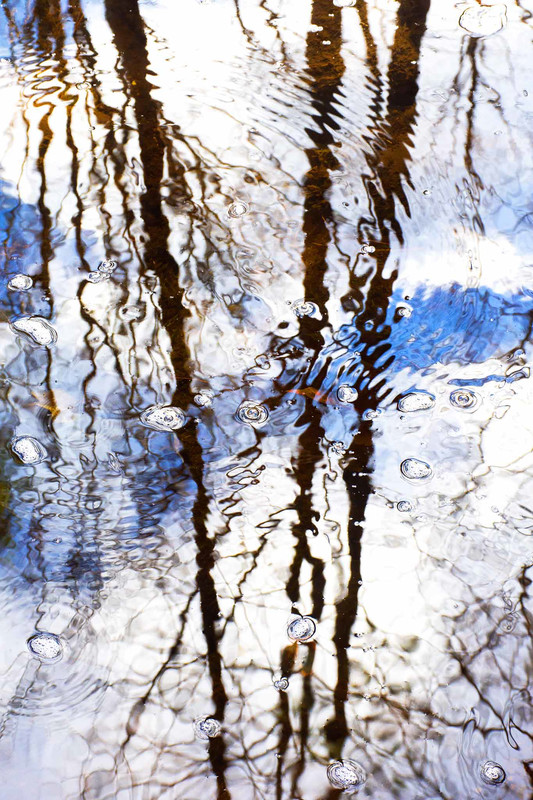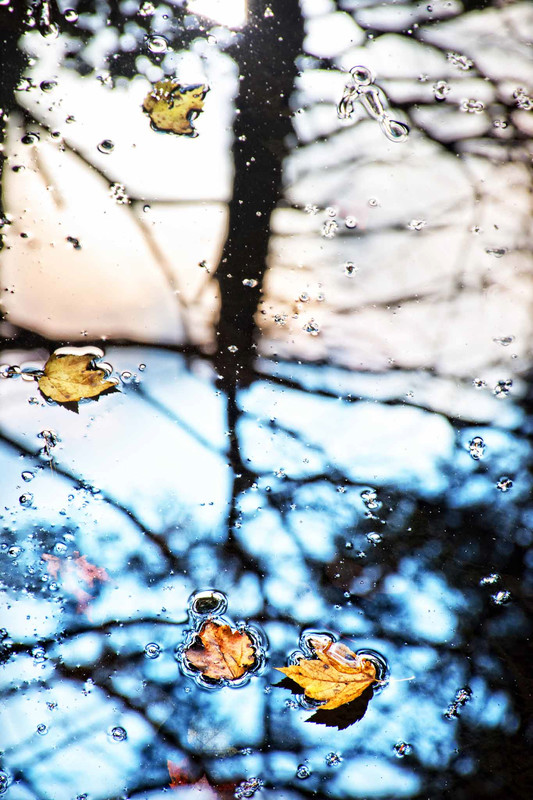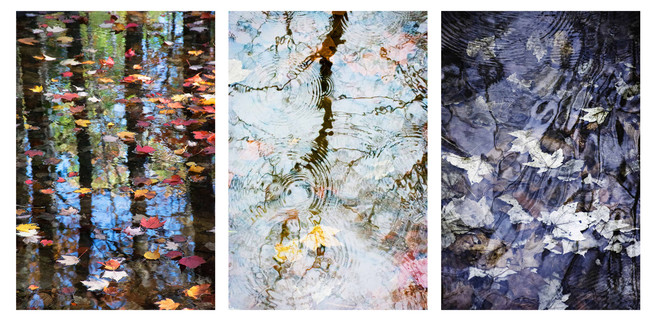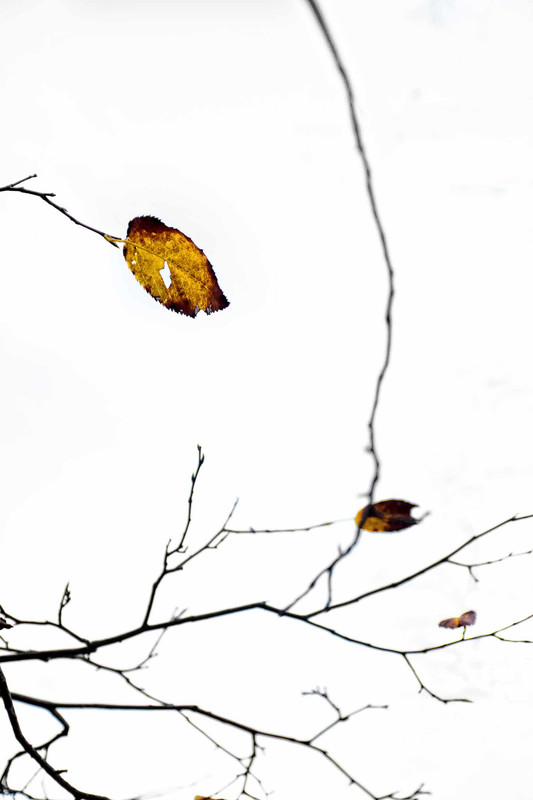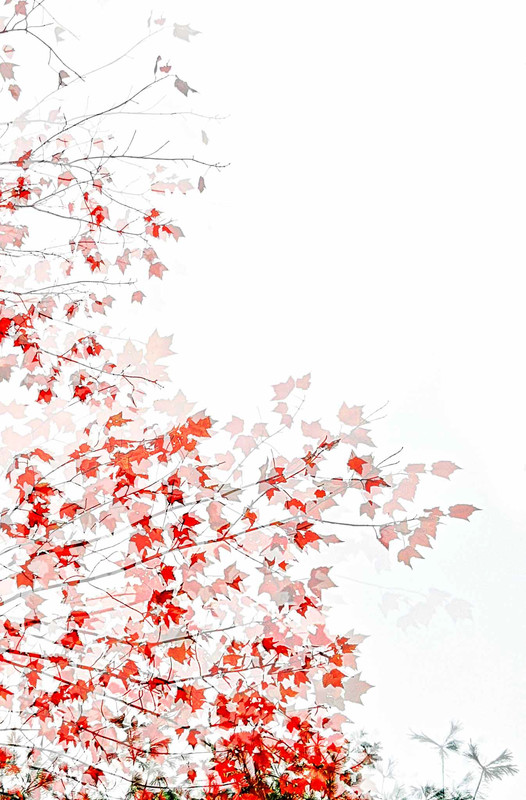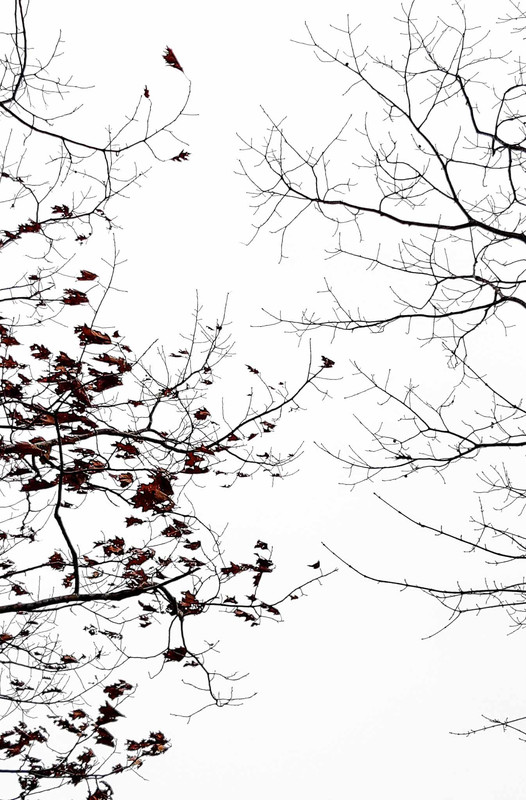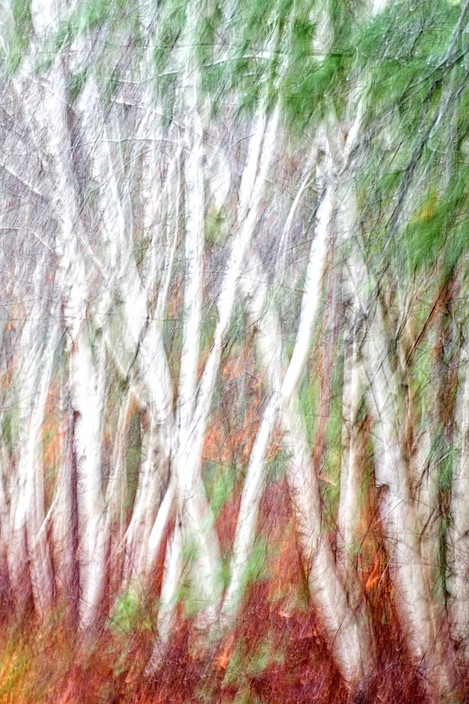Small things that matter

Sara Harley
Sara Harley is a photographic artist living on the South Shore of Nova Scotia. Sara creates images to illustrate a range of emotions, from dark and brooding to light and inspirational. Her work has been published in several books and magazines, and a book cover for Margaret Atwood.
The past twelve months or so has reinforced the notion for most landscape photographers that being in the landscape, although perhaps restricted closer to home, is the place to ground oneself. The worldwide pandemic has also opened other people's eyes to the importance of immersing themselves in nature in order to maintain emotional mental health, but my story goes back farther than that.
I have been working on a project that I call Trailings for almost two years, a journey that has been restorative for me. Walks along the trails became more than exercise, they took me outside myself and my thoughts, taking negative energy and turning it into something positive. It became important for me to share my story.
Trailings is a personal exploration of the relationship between observation and mental health. Over the past few years, I began to realise how submerging myself in the natural world impacted my state of mind, and this connection became the inspiration behind my project. It seems that the world is in agreement - recent studies have shown that walking in nature is the answer to the COVID-19 pandemic blues.
I live in the town of Bridgewater, Nova Scotia, which has a population of approximately 9,000 people. Like many small towns in Canada, the downtown was a wasteland of empty, dilapidated buildings interspersed with "fast cash" and pre-loved goods shops. But the town has been favoured with some positive changes over the past few years, and revitalisation has brought life back to our downtown. Best of all, the town is blessed with a river running through it and the Centennial Trail, an 8 kilometre multi-use trail that meanders through forested areas. In recent years, additional connecting trails have been added through the area, making it possible to walk for hours in nature while still being in the centre of a developed area.
Research has shown that there are many physical benefits of walking. Walking can help burn calories, strengthen the heart, lower blood sugar, ease joint pain, boost immune function, boost energy, and extend life.
Every day, I walked with one of our family dogs along the aforementioned river and trails of our small town. The days in 2019 seemed quite bleak to me, but during one walk something happened and I literally stopped in my tracks. I felt different and, to my astonishment, I realised I was happy. After so many weeks and months of feeling like I carried a physical weight on my shoulders, I felt a lightness that had become unknown to me. What was the cause of this? I stood still, looked, and listened. The scenery that I had been trudging through every day without really seeing seemed unremarkable, but that was the moment things changed for me. I took a photograph with my phone to mark the occasion and made the conscious decision to start taking notice of the world around me.
Trailings are defined as "to mark out, to track, to tread down or make a path through grass or the like". I left no evidence on the trails I tread. Instead, the trailings of my walks left a path through my mind, opening it up to possibilities, creativity, and positivity. Walking with my camera was my therapy, used as a means of processing and overcoming life's challenges. I walked five to ten kilometres every day, documenting the journey and providing fodder for personal introspection.
In the beginning, I made some notes when I returned home. It was so cold today, my teeth ached as I walked along the river. The ospreys have returned, the leaves are starting to come out. I made small observations, nothing extraordinary. During this time period, my project was a documentary capture of my trail walks with my camera, interesting things that caught my eye.
Some people might find walking the same route each and every day to be mundane, but I found the opposite to be true. Familiarity of place gave me a new perspective, and I started to notice details previously overlooked.
I started carrying a notebook on my walks, and my writings became more introspective, less simple documentation. I began printing my photographs and pinned them to a bulletin board above my desk, and noticed that many common themes were emerging. Did my photographs portray my state of mind? What was the motivation for making these images? Why did the project matter so much to me? There were lots to puzzle over.
At the start of my project, I was making many dark images which, in retrospect, may have been my way of expressing my innermost thoughts. I processed these complex, even fussy, images in black and white, unconsciously revealing a distressed state of mind.
During this time of introspection and observation, I also made many abstract images - details of bark, patterns in the ice, reflections in the water, lichen covered rocks. Did my interest in this type of image reflect my confused state of mind? Every day I was filled with self-doubt about this project. Who else would be interested, who else would care? Then I ventured into the woods again and was filled with confidence, the forest wanted me to capture these stories. It sounds crazy, I know. Letting my mind wander and wonder at Nature's talent in putting together such beautiful constructions led me to thoughts that spending time in nature reveals that everything is interconnected. Our happiness and fulfilment is also interconnected, and to attain happiness we need to give it away to others. We must give in order to receive.
Over time my photographs seemed to lighten and become more playful. I became enamoured with patterns in the ice and I spent many hours searching for unique images, amazed that something motionless could convey so much vitality.
Sometimes I saw beauty where others might see destruction. I was fascinated with a section of trees with mid-summer leaves that had been chewed through by insects. I thought they were beautiful, resembling delicate lace, and returned to the same area several times to take a series of photographs.
I realised that I must have been smitten with reflections when a passer-by said he had seen me in the same spot many times. It had become second nature for me to stop in my favourite locations and check the reflection of the day. There was an endless variety....full of colour, monochrome, smooth as glass, rippled with raindrops. I never tired of making images of reflections, and truly believe I could fill a whole book on just this subject.
Wikipedia describes journal therapy as a writing therapy focusing on the writer's internal experiences, thoughts and feelings. In my experience, pictorialisation is therapeutic and much more meaningful because I am a visual person. I used my camera as a tool, and I told my stories through pictures. By observing small details in the world around me, my mind emptied of its problems. After a time, I eventually achieved an inner peace, a quiet joy.
Time can't be captured, but photos can tell the story of passing time. Photographing the same subject over months and seasons was a way for me to gain perspective. Returning to the same location over a period of time captured very different results. Nature has a way of teaching us that allowing time to pass can help us, and the cycles of life will ebb and flow.
Over time, my documentary photography became more refined and I created images that conveyed my own sense of style, trying to convey stories in a minimalist way.
When I became aware that this project might be a story worth sharing, I started to curate a collection of photographs that told a story, a visual representation of the stages of emotional healing. A solitary leaf can conceptualise sorrow, or life balance, or even exhilaration. The limbs of a tree give voice to the wind and tell their story of challenges faced, some won, and some lost.
Becoming mindful of the environment is a feast for the senses. Not only do we discover new details with our eyes, but we become aware of our other senses as well. Smell the sweet scent of pine needles drying in the hot summer sun, the damp decay of the leaves in late fall. Hear the cheerful chirping of birds in the spring, the roar of the wind through the treetops during a storm, the crunch of stones beneath our feet. Feel the leathery smoothness of the leaves, the sticky sap of the fallen pine cones, and the many, many textures of the bark on the trees.
This project has shown me that it's the small things that matter. It's the small things that make our world worth living in and help us to know that we are human, we are vulnerable. We are. fragile, but we can heal.
- Wind Dance
- Water Dance
- Triptych of Water Dance, I’ll Cry if I Want To, Barely There
- Skeleton, Solitary Confinement
- Skeleton
- Shifting Seasons
- Left Hanging
- Lacework
- I’ll Cry if I Want To
- Haves and Have Nots)
- Blue Sky Day, Floaters
- Fish Out of Water
- Effervescence
- Celebration
- Blue Sky Day
- Barely There

